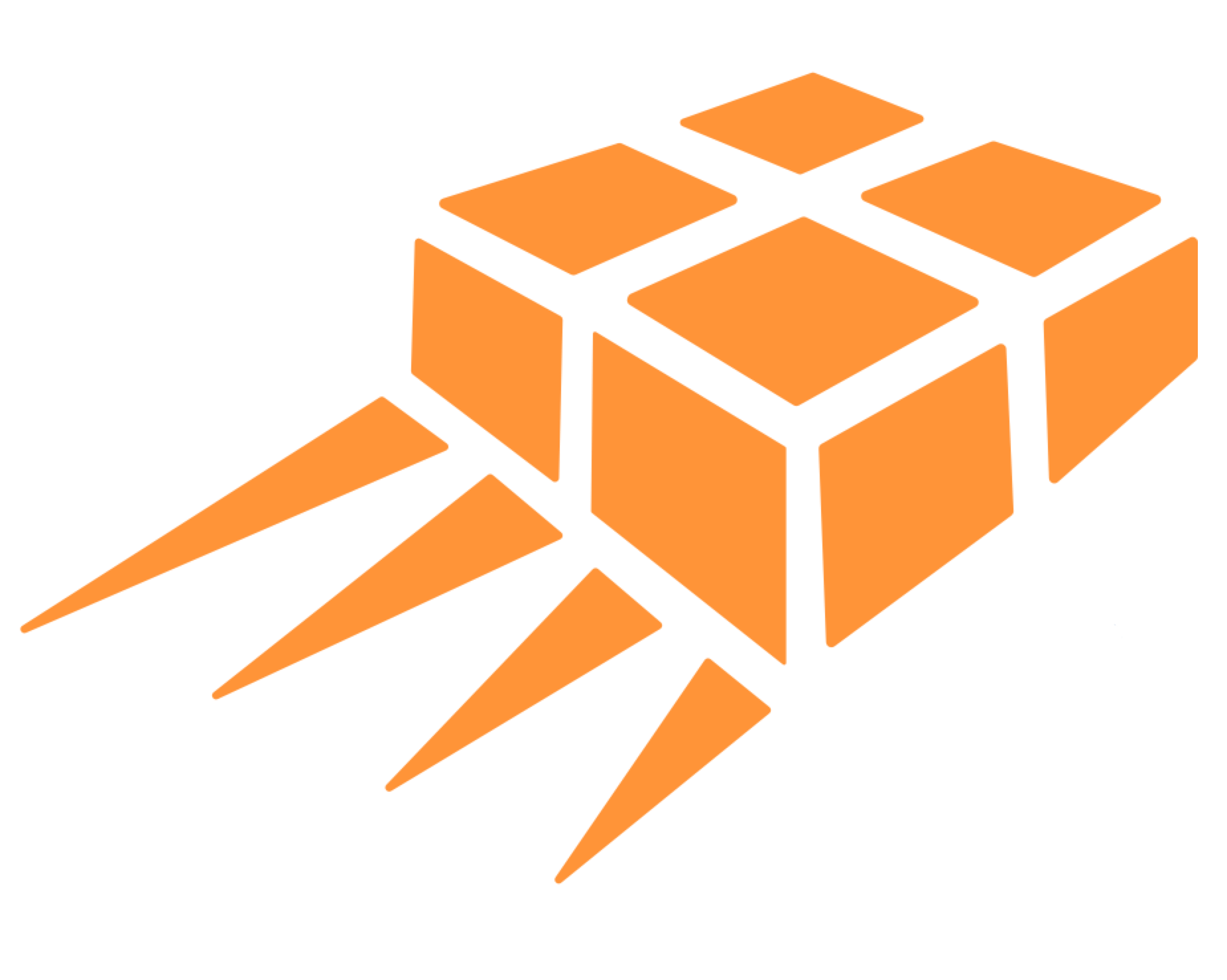
Free trade to the USA via Section 321
For shippers of parcels, whether a gift to an overseas relative or your international customer, free trade never seems .. well.. free.
But, at least for parcels to the USA, free trade has just become "freer" .... More companies are seeking to develop high volume parcel flows to the USA.
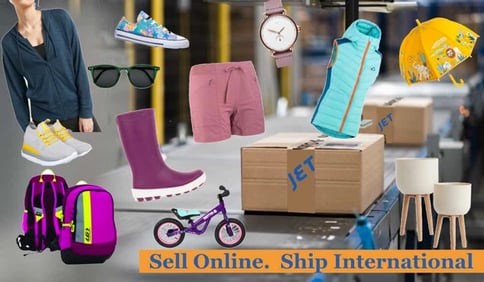
Free Trade Agreements ≠ Free Parcel Import
Packages sent internationally are often subjected to a nebulous list of “duties, taxes and fees” even with the existence of a free trade agreement.
Despite the existence of NAFTA, for example, packages to Canada and Mexico from the USA are subjected to significant fees that include duty, taxes and processing charges.
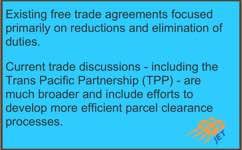
With an $800 low value threshold, high volume parcel flows to the USAimported direclty to the USA have grown exponentially.
What is Section 321?
US Customs allows most individual orders valued under $800 USD to be entered and cleared duty free into the USA. This entry type is known as a Section 321 Informal Entry. Using this entry type, importers can consolidate all their qualifying orders under one entry without H.S. Codes and benefit from duty free entry.
Most goods cleared via a section 321 informal entry are imported under Part 128 of the Code of Federal Regulations (CFR). As such, they are imported to facilities with port codes that define them as Express facilities or ECCF's. Many express operators are also able to clear via freight facilities (with section 321 processes) known as a Container Freight Station or CFS.
For importers who have H.S. codes, it may be best to use a Section 321 "type 86" entry. Using this entry type, goods can be imported via traditional methods using the Automated Broker Interface or ABI system.

Disclaimer: The information in Jet Worldwide online content, including this post, is for general information only. The content on this posting is provided “as is”; no representations are made that the content is error-free.
Free Trade for Parcels and online orders to the USA
With the passage of The Trade Facilitation and Trade Enforcement Act (H.R. 644), free trade for parcels just took a big step forward for e-commerce companies sending to the USA.
* With some exceptions, the vast majority of e-commerce parcels valued under $800 can now be imported to the USA without duty and taxes using a simplified entry process.
Low value entries to the USA, often referred to as "Section 321," are simpler to manage and process.
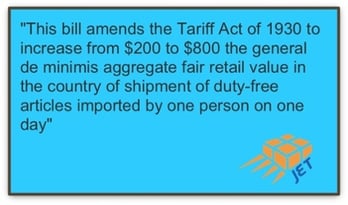
Some background:
Most customs authorities around the world have made allowances for clearance of very low value imports. This level is often referred to as the de minimis level and low value threshold. The values needed to qualify for this exemption varies from a high of $800 to the USA to virtually $0 in other countries.
A primarily benefit for items qualified as "low value"is ease of processing with less data required for clearance.
Low value thresholds were theoretically set at the point where the cost of processing exceeded the amount of duty and taxes collected. For example,it would cost more to process the duty and taxes on a$10 shipment than would be collected?
From an insignificant category to the most important: With the exponential growth of cross border e-commerce, the de minimis value became the most significant issue.
The Cross border e-commerce parcel industry is well aware of the de minimis level of each country. See our blog on the issue of companies using under-declared values for the purpose of qualifying for a low value entry.
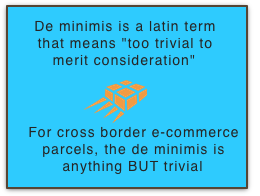
De-minimis values around the world:
The USA now leads the world with highest de-minimis. Most countries low value threshold’s are less than $100: See our blog on de minimis and valuations.
Free trade and cross border e-commerce:
- The higher USA de minimis value was championed by those who stand to benefit the most from cross border e-commerce: E-bay, Amazon,FedEx, UPS and the US Postal Service.
- FedEx, UPS and the USPS benefit from significantly easier customs processing and lower costs.
- E-bay lobbies governments (via their lobbying group "ebay Main Street") around the world for making parcel clearance easier and makes the case that international e-commerce benefits small businesses and exporters alike.
 Useful information regarding declared value
Useful information regarding declared value
 Read more about import duty and how it is calculated
Read more about import duty and how it is calculated
Duties versus customs fees
US customs commonly assesses user fees to cover their costs. For example:
- Express facilities (E.C.C.F’s), US customs charges over $1 per shipment (officially designated as a reimbursement fee)
- Merchandise Processing Fee for formal entries
Are there really no fees charged by customs to process e-commerce parcels?
Surprisingly, there is no mention of a user fee related to clearance of low value e-commerce imports (that are not cleared thorough an ECCF). For e-commerce shipments, customs responsibility has shifted from duty collection to trademark enforcement, regulatory compliance and national security.
Note: We expect the exponential growth of parcels being imported will force customs to allocate - and charge - for the necessary additional resources. For sustainable parcel logistics flows, we advise customers to build in a cost of $1 per shipment as the expected customs processing fee.
New Challenge for US Retailers and E-tailers
The symbiotic relationship between low cost Asian producers and US retailers is about to challenged by a new law that allows much easier duty free importation of most goods valued under $800.
International manufacturers and sellers no longer need to rely on US re sellers/ retailers to reach their final customer.
The challenge is to all US Retailers - both e-tailers and brick and mortar.
Although the low value threshold is actually a minor mention in the Trade Facilitation and Trade Enforcement Act (H.R. 644), it is expected to significantly impact US based e-retailers and retailers.





